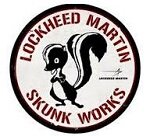
From 1899-1905,
The Wright Brothers invented Knowledge Based Development (Lean Product & Process Development), evolved from their goal to study and advance the knowledge of flight.
At the same time, some shipbuilding references exhibited elements of lean practice (if you do your research, you’ll notice some non-lean elements also):
From 1899-1902,

Novelty was introduced as simplicity. Saving in lead time was achieved by standardization.
On December 11, 1906, 3 weeks short of Fisher's accelerated schedule, H.M.S. Dreadnought was accepted into the Royal Navy. 10 months from launching to full commissioning in the navy had never been equaled in the history of capital ships."

In 1400,
at the 46 hectare Arsenale di Venezia (Venice) dockyard, a production capacity of 6 galleys/ month was reached by the 1500’s. They standardized ships, developed a new galley using less timber, and a standard frame. Production occurred onsite for rope & armoury. Modular construction and elements of one piece flow were also used. Multiple designs were produced including the Mediterranean Brigantine, Galiot, Fusta, and Galea Bastarda. At its peak in the 1600s the dockyard was turning out 1 ship a day.






















